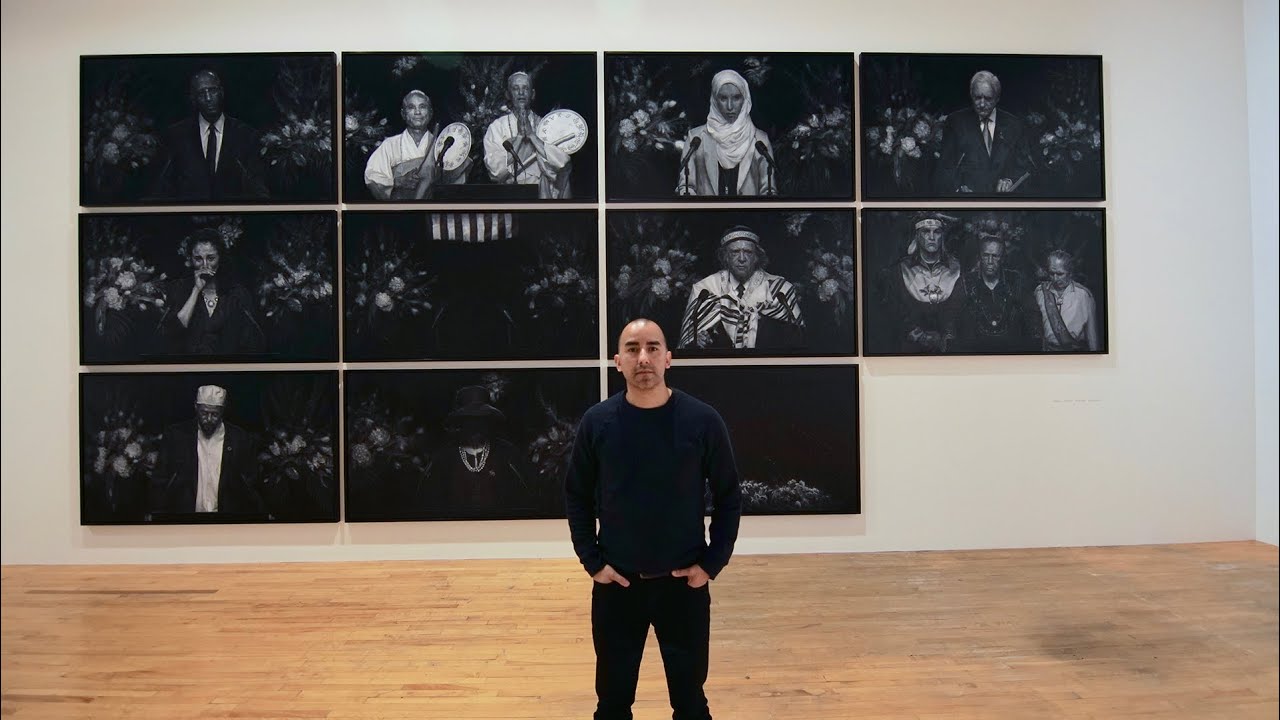JR: Can Art Change the World? | TED
Summary
TLDRArtist JR uses large-scale photography and storytelling to bridge divides and provoke thought. From pasting images in conflict zones to covering a prison yard with inmates' faces, JR's projects challenge perceptions and foster dialogue. His work in Tehachapi prison led to personal transformations, improved relationships, and even freedom for some. JR's art serves as a mirror, reflecting humanity and prompting change.
Takeaways
- 🎨 JR is an artist who uses walls to bring people together rather than divide them.
- 🌏 JR has implemented projects in various locations, including Israel, Palestine, Brazil, Paris, and the US-Mexico border.
- 🤝 In Israel and Palestine, JR pasted photos of individuals from both sides doing the same jobs to challenge perceptions.
- 🏛️ At the Louvre in Paris, JR and 400 volunteers wheat-pasted the entire plaza to make the pyramid appear ten times larger.
- 👶 JR questioned the perspective of a child named Kikito living near the US-Mexico border wall.
- 🏭 JR was inspired to work in prisons after a friend suggested it, leading to a project in California's Tehachapi prison.
- 📸 JR photographed and recorded inmates' stories, aiming to humanize them and challenge the stigma of incarceration.
- 🔍 JR's project in the prison led to unexpected connections, with inmates' families seeing them on social media and guards treating them differently.
- 🚀 The use of a drone to view the completed project from above revealed the full impact of JR's work to the inmates and staff.
- 📖 JR's work led to profound personal transformations, exemplified by an inmate named Kevin who removed a swastika tattoo and changed his outlook.
- 🌐 JR's recent project in Ukraine involved unfurling a large image of a refugee child, symbolizing the human impact of war.
Q & A
What is the main theme of JR's work as an artist?
-JR's work as an artist is centered around bringing people together and using art to bridge gaps between communities.
How did JR's project in Israel and Palestine aim to break down barriers?
-In Israel and Palestine, JR pasted photos of individuals from both sides doing the same job on city walls, making it difficult for people to distinguish who was from which side.
What was the impact of JR's project in the favelas of Brazil?
-In the favelas of Brazil, JR pasted images of women's faces on the hills of the community, drawing attention to the often overlooked victims of violence.
How did JR involve the community in his project at the Louvre in Paris?
-At the Louvre, JR and 400 people used paper and glue to wheat-paste the entire plazas, making the pyramid appear ten times bigger.
What was the significance of JR's project at the border between Mexico and the US?
-At the Mexico-US border, JR's project aimed to highlight the human aspect of the immigration issue, showing a child's perspective on the dividing wall.
What was the initial challenge JR faced when considering a project in a prison?
-JR was initially hesitant to do a project in prison due to the perceived amount of paperwork and bureaucracy, as well as his own history of arrests.
How did JR gain access to conduct a project in a prison?
-JR gained access to the prison after a series of phone calls involving his friend Saul, Scott, and the governor of California, who recognized JR's work from a previous mural.
What was the process like for JR when he began working with inmates at the prison?
-JR started by photographing and recording the inmates' stories, then printed the images and pasted them in the prison yard, involving inmates from all gangs and races.
How did the guards at the supermax security prison react to JR's project?
-Initially, the guards were skeptical and maintained strict oversight, but eventually, some guards joined in the project, symbolizing the breaking down of barriers between inmates and guards.
What was the outcome of JR's project for the inmates and their families?
-The project led to inmates reconnecting with their families, as their stories were shared on social media, and some were even moved to lower-security prisons or released due to positive behavior noted by the guards.
How did JR's project impact the perception of one inmate with a swastika tattoo?
-The project led to a public discussion about the inmate's tattoo, prompting a movement to help him remove it, and eventually, after his release, the tattoo was removed by a Jewish doctor.
Outlines

Этот раздел доступен только подписчикам платных тарифов. Пожалуйста, перейдите на платный тариф для доступа.
Перейти на платный тарифMindmap

Этот раздел доступен только подписчикам платных тарифов. Пожалуйста, перейдите на платный тариф для доступа.
Перейти на платный тарифKeywords

Этот раздел доступен только подписчикам платных тарифов. Пожалуйста, перейдите на платный тариф для доступа.
Перейти на платный тарифHighlights

Этот раздел доступен только подписчикам платных тарифов. Пожалуйста, перейдите на платный тариф для доступа.
Перейти на платный тарифTranscripts

Этот раздел доступен только подписчикам платных тарифов. Пожалуйста, перейдите на платный тариф для доступа.
Перейти на платный тарифПосмотреть больше похожих видео

How to unite people through art (with JR) | How to Be a Better Human

Use art to turn the world inside out | JR

Vincent Valdez: The Beginning is Near | In The Making | American Masters | PBS

How Norway designed a more humane prison

Prison Without Walls

SHOCKING: Whitney Webb EXPOSES Truths About RFK Jr. (clip)
5.0 / 5 (0 votes)
